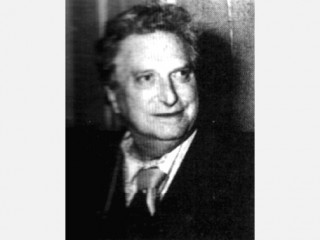
Carlo Levi biography
Date of birth : 1902-11-29
Date of death : 1975-01-05
Birthplace : Turin, Italy
Nationality : Italian
Category : Arts and Entertainment
Last modified : 2011-01-27
Credited as : Writer and painter, ,
The Italian writer and painter Carlo Levi, noted as an anti-Fascist leader during Mussolini's dictatorship, scored a sensational international success with his book "Christ Stopped at Eboli" in 1945.
Carlo Levi was born on Nov. 29, 1902, in Turin, Italy. Although he received a degree in medicine from Turin University, he never practiced medicine. Instead, he took up painting and followed literary pursuits. Levi directed the clandestine anti-Fascist publication Lotta politica and with a group of colleagues founded the Giustizia e Libertà movement.
His first arrest for anti-Fascist activities was in 1934. In 1935-1936 Levi lived in political exile under police surveillance in the southern province of Lucania because of his opposition to the Fascist government. Following his release, he joined the Resistance in Paris. In 1944 and 1945 he lived in Florence and was coeditor of La nazione del popolo. In 1945 and 1946 he directed L'Italia libera in Rome.
Levi's exile in the remote province of Lucania in surroundings hardly touched by modern civilization created a deep impression upon him. Out of this experience of a world almost outside of time grew his first book, Cristo si è fermato a Eboli (1945; Christ Stopped at Eboli). A combination of reportage, diary, and journalist chronicle, the work was written with an astute insight into the southern Italian dilemma. Upon its publication in the United States in 1947, the work was described in the New York Times Book Review by Paolo Milano as "a diary, an album of sketches, a novelette, a sociological study and a political essay."
Ideologically, Levi denounced the rift between the classes and protested the exploitation of the lower classes. Thus, he saw in Italian history a continual struggle between contadini (peasants) and luigini (after Don Luigi, the local schoolteacher and party functionary of Cristo si è fermato a Eboli). Such ideas were at the root of his volume of essays Paura della libertà (1946).
Levi's next book, L'orologio (1950), showed his disillusion with the course Italian life took after the Liberation. The Rome of the immediate postwar era was the subject of this book, in which narration and critical observation alternate and in which facts are mixed with fancy.
In Levi's later writings his tendency to mix fact with fancy was resolved in favor of the factual and critical approach. Le parole sono pietre: Tre giornate in Sicilia (1955) was an account of a trip to Sicily and a further denunciation of the situation in the Italian south. Il futuro ha un cuore antico (1956) was a critical report on a trip to the Soviet Union, whose great traditions Levi viewed as being absorbed by the revolution. La doppia notte dei tigli (1959) was a critical, if not too accurate, travelog on a few days Levi spent in Germany. With Tutto il miele è finito (1964) Levi returned to a critical investigation of underprivileged Italian provinces. This book, which took its title from a Sardinian wake tune, was a description of a trip to Sardinia.
Levi was elected to the Italian Senate in 1963 and served on the Communist ticket for two terms. He was not re-elected in 1972. Throughout his life, Levi was a prominent figure on the Roman artistic scene.
Many of Levi's paintings focus on the human figure and demonstrate his belief in man as the center of the universe: "Any art that doesn't address itself to the whole of man is destined to failure."
Levi died of pneumonia at the age of 72 in Rome on January 5, 1975.
A useful background work in English for the study of Levi is Sergio Pacifici, A Guide to Contemporary Italian Literature from Futurism to Neorealism (1962).
















